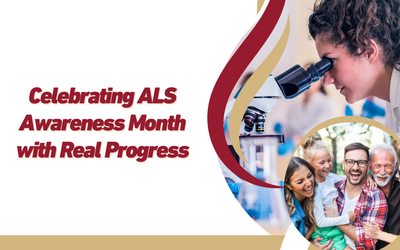
For decades, the outlook for people living with ALS (amyotrophic lateral sclerosis) was heartbreaking and consistent: once physical function was lost, it was gone for good. Today, thanks to champions like the ALS Association, there are signs that functional improvement is not only possible but is already happening for people with certain forms of ALS.
Yes, getting better, a phrase that once felt painfully out of reach, is now a reality for some. This progress didn’t emerge overnight. It’s the result of over two decades of investment in an experimental technology called antisense therapy. When this research began 20 years ago, the concept was promising but untested for neurodegenerative diseases like ALS. Many questioned whether it would lead anywhere.
Today, this research and the therapy it uncovered is rewriting what we thought we knew about ALS. It’s a proof of concept that recovery is possible. It’s not just a treatment; it’s a signal to the entire ALS community that meaningful change is within reach.
Investing in science, research and treatment offers something even more meaningful: more time. More birthdays. More milestones. More memories. For families like the Mosleys who have been devastated by this disease, those moments mean everything. “We’ve had 39 members of my family in three generations diagnosed with ALS,” says Cory Mosley. Now there’s a chance to imagine a different future. A future where families like Cory’s might have more time – with their parents, with their children or with their siblings – something family members before them never had.
And this is just the beginning. There are over 40 genes currently linked to ALS, and many more people are affected without a known genetic cause, but we know that investing in innovation pays off. The challenge now is to expand on this momentum, explore new treatments, and reach every person affected by this disease.
The ALS community is on the cusp of a new era, one where losing function may no longer be the end of the story. This ALS Awareness Month we recognize the progress that’s been made and look forward to the future. A future that’s changing what’s possible for everyone living (and those loving someone) with ALS.